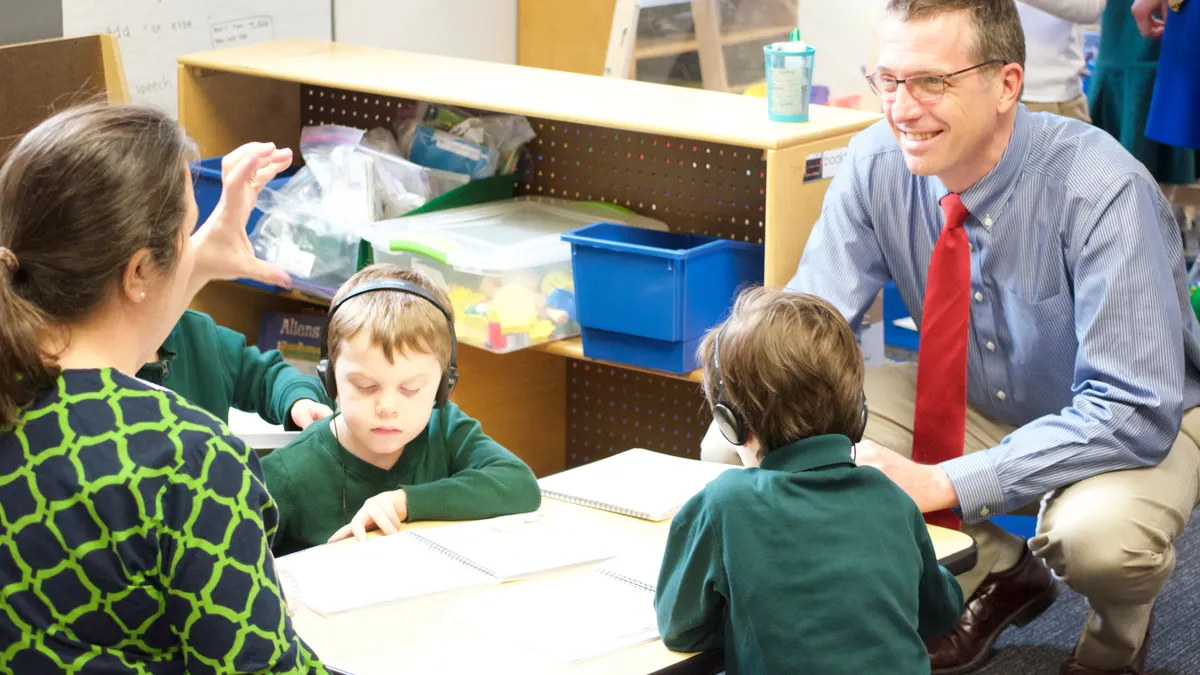Building and maintaining a positive school culture can be an uphill battle for many principals and superintendents. Once attained, however, it has shown to have a significant impact in areas of concern including student academic performance and teacher retention.
Recently, one Massachusetts school linked positive school culture to a 100% college acceptance rate, and positive climate was also found to reduce teacher turnover in a turnaround school in Colorado. This kind of impact begins with strong district and school leaders, who model attitudes and behaviors for staff members and students.
For those wondering where to start, we've gathered advice from several veteran administrators on how they approach building positive culture within their schools and districts.
Value everyone's journey
"Building a positive culture starts with valuing everyone’s journey within that culture. The more we recognize the great work happening in our spaces, acknowledge to the person that it’s great work, and extend the conversation about that work to someone who wasn’t there so they know that it is happening, the better chance we have to provide an environment where everyone can flourish.
We often protect what we built, so valuing everyone’s place in our culture provides collective ownership across all areas of the organization."
-Joe Sanfelippo, superintendent of Fall Creek School District in Wisconsin
Avoid negative messaging
"A good starting place is to look at the walls. What do the walls of your school say? Are they filled with messages like 'Don’t do this…' or 'No students allowed'?
At our school, we do not permit any negative signage. So on our walls, messages say 'Keep walking' as opposed to 'No standing,' or 'Thanks for putting your cell phone away' instead of 'No cell phones allowed.' Whether we are discussing our classrooms, hallways or the entrance, we want all who enter to sense that this is a space that belongs to them.
The no negative signage rule is the foundation of an environment where our communication is positive and affirming. What we believe about students and school is communicated not just in what we say, but also in how we say it."
-Susan Kessler, executive principal at Hunters Lane High School in Nashville, Tennessee
Encourage risk-taking
"If you want to create a positive culture of innovation in your schools, think about how you encourage and reward risk-taking by your staff and students. Do you start with a 'yes' and try to help new ideas become realities, or do you start with a 'no' and list the reasons why something new and different would not work?
Our students are getting ready to enter a future that is different from the [one] we experienced. Their schools need to evolve and move forward, and that starts with the culture you create in the buildings."
-Nick Polyak, superintendent of Leyden School District 21 in Franklin Park, Illinois
Model the behavior you expect from others
"We set the tone through our words and actions, and [we] should take every opportunity to model the behaviors we expect from others. Culture is built through every interaction we have with our students, staff and families, and those interactions must be optimistic, inspiring and supportive.
The most effective superintendents understand the power their words and actions have in creating a culture that serves as the foundation for high levels of learning for students in our schools."
-Candace Singh, superintendent of Fallbrook Union Elementary School District in California
Support others and never lose your humor
"Begin by ensuring that every member of the faculty and staff feel that they are supported by leadership in a professional community that values innovation, growth and collegiality. Teachers and administrators who feel professionally stimulated and supported are more present for their students and actively seek ways to engage them creatively and positively.
Then, provide a robust approach to social-emotional learning with students that nurtures a growth mindset, builds positive relationships with adults and peers, and fosters the emotional safety necessary for students to focus on their learning.
And, of course, never lose your sense of humor. Lightheartedness (which is different than taking things lightly) is infectious."
-Scott Baytosh, head of school at Alexandria Country Day School in Virginia
Do the little things that go a long way
"Leadership owns every aspect of climate and culture, and they influence the outcome daily within their practice. I feel strongly that the way not to go is to hold meetings, put together detailed mapping plans, or focus staff on what they can do to change climate.
I absolutely believe that if, as a leader, you simply do the little things every day, there then are no big issues to overcome. Visibility, honesty, empowering others, [keeping] your word, never leveling anyone by job description, and [saying] a simple 'thank you' are the start of a positive formula, and each of your actions needs to be real, meaningful and sustainable. Lead with passion for the school community and watch everyone follow your lead."
-Joseph Erardi, former superintendent of Newtown Public Schools in Connecticut
Make time to greet others
"We make every attempt to greet students in the morning and when they leave for the day. As the principal, I model that by being one of the first people students see; greeting them with a hello, a smile, a high five and/or a hug, and calling students by name. This friendly approach models for staff and students that school is a positive place for learning.
We ask teachers to greet students each class period at the door in the same way or a way of their choosing. This gives students the feeling that this is our shared school and that they are welcome here."
-David Wick, principal of Columbia Falls Junior High in Columbia Falls, Montana








 Dive Awards
Dive Awards















